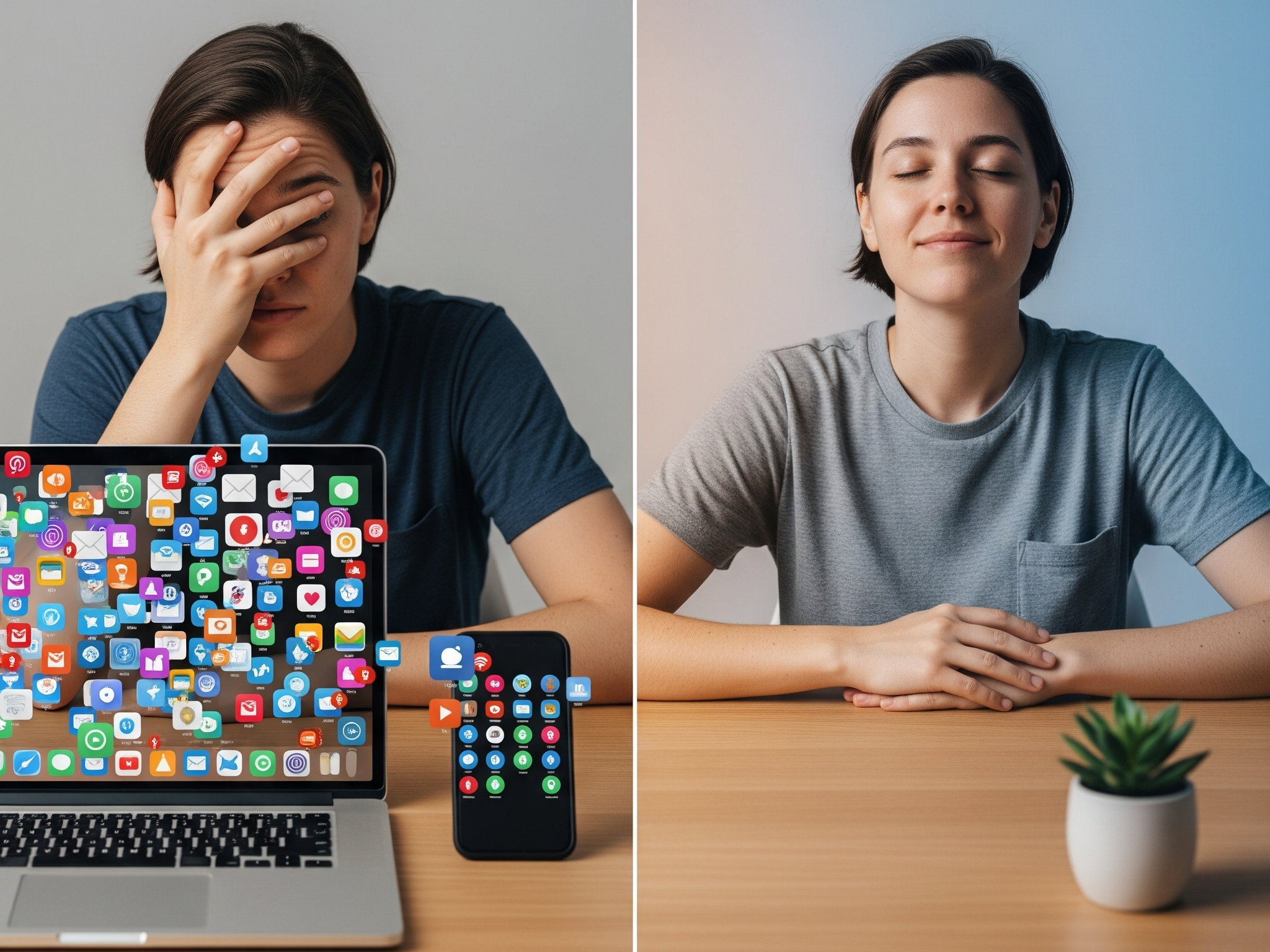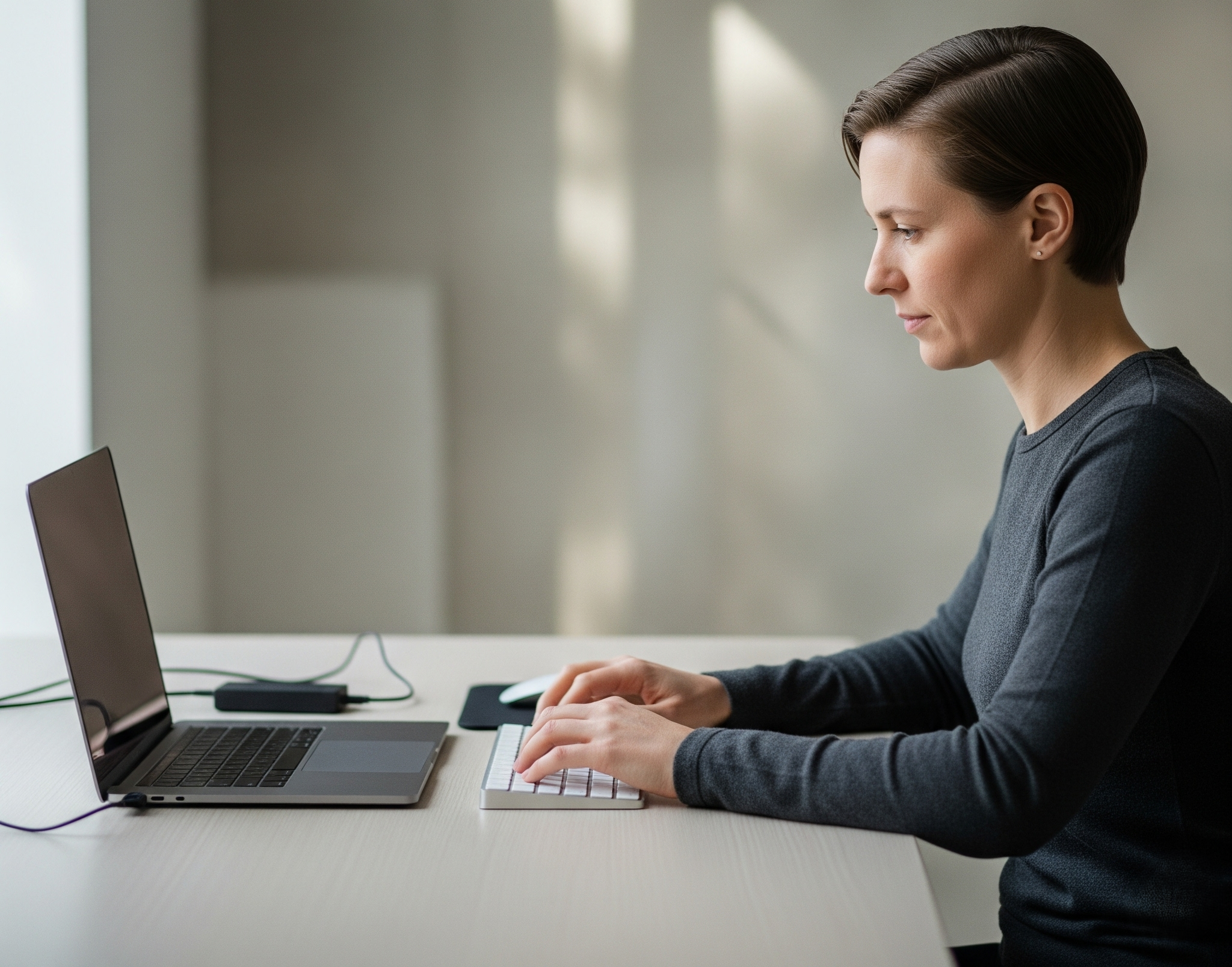In today’s world, our phones, laptops, and tablets are constantly getting our attention. A notification pops up, an email lands in the inbox, a new video recommendation shows up, and before we know it, an hour has passed without us realizing. I used to think this as normal, but over time, I started noticing the way it was taking on me. I would often feel drained, not because of heavy work, but simply from using too many apps, files, and notifications.
That’s when I discovered digital minimalism. The idea is to use technology intentionally instead of letting it control you. But applying it in my life changed everything, my focus, my energy, and even how I spent my free time.
In this blog, I’ll share what digital minimalism really means, why it matters, and most importantly, how I personally applied it step by step. If you’ve ever felt overwhelmed by your digital world, maybe my story will help you too.
What is Digital Minimalism?
For me, digital minimalism is not about deleting all apps and living without the internet. It’s about keeping only what truly adds value to your life. Think of it like cleaning your home where you don’t throw away the furniture you use daily, but you do get rid of the broken chair, gathering dust in the corner.
A cluttered home makes it hard to move freely. Similarly, a cluttered digital space makes it difficult to focus, be productive, or even feel calm. The more unnecessary apps, files, and notifications I had, the more I felt my mind was always on, even when I wasn’t working.
Digital minimalism gave me a framework such as instead of being a passive consumer of technology, I became an active decision-maker about what stays and what goes.
Signs I Needed Digital Decluttering
Look at the signs belows. If you relate to any of these, you might need digital decluttering too:
-
Unread Emails Everywhere: At one point, my inbox had over 2,500 unread emails. Most were newsletters I never read, shopping promotions, or random subscriptions I didn’t even remember signing up for. Every time I opened my inbox, the big number stressed me out.
-
Mindless Scrolling: I’d open Instagram just for 5 minutes and end up losing 45 minutes. It wasn’t even enjoyable, it felt like my attention was stolen.
-
Phone Storage Warnings: My phone constantly reminded me, as storage almost full. Most of the space was taken by duplicate photos, unused apps, and downloaded files I forgot about.
-
Too Many Notifications: From random shopping apps to YouTube updates, my phone buzzed all day. Even when I didn’t check, just seeing the notifications pile up gave me anxiety.
If I’m honest, I ignored these signs for months. I thought this was just how life with technology is. But slowly, I realized it was affecting my focus, mood, and even sleep.
Why Digital Minimalism Matters
When I finally started simplifying my digital world, the benefits surprised me. It wasn’t just about having a cleaner phone screen, it was about changing how I felt daily. Here’s what I noticed:
1. Less Stress
Once I reduced notifications and organized my apps, my mind felt lighter. The constant buzzing had been keeping me in a state of alert all the time. Without it, I actually felt calmer.
2. More Productivity
Before decluttering, I wasted so much time searching for files, digging through tabs, or scrolling through apps. After organizing everything, I started finishing tasks faster.
3. Better Focus
When my phone wasn’t tempting me every few minutes, I could sit and work deeply. I realized how much better my work quality was when I wasn’t constantly switching tasks.
4. More Time for Real Life
This one was the biggest. Cutting down on digital clutter gave me hours back every week. I used that time to read books, go for walks, and even reconnect with hobbies I had abandoned.
My Step-by-Step Digital Decluttering Journey
Here’s exactly how I applied digital minimalism in my own life, one step at a time.
Step 1: Cleaning My Smartphone
My phone was the biggest distraction, so I started there.
What I did:
-
Deleted apps I hadn’t opened in 3 months (including three mobile games I downloaded just for fun but never played).
-
Organized my home screen so that only essential apps (calls, messages, calendar, notes) were visible. Everything else went into folders.
-
Turned off 90% of notifications. For example, I don’t need to know every time someone likes a post on Instagram.
-
Used Focus Mode during study/work hours.
Result:
Within a week, I found myself picking up my phone far less. Earlier, I’d unlock it 70 to 80 times a day. After cleaning it up, the number dropped to less than 40. That’s almost half the distractions gone.
Step 2: Decluttering My Email Inbox
My email inbox was chaos. Over 3,000 unread emails made it impossible to find anything important.
What I did:
-
Unsubscribed from newsletters I never read.
-
Created folders like work,personal, and bills/receipts.
-
Set up filters so incoming emails automatically went into the right folder.
-
Dedicated 10 minutes daily to clearing junk.
Result:
Now I rarely have more than 10 unread emails at a time. Important messages don’t get buried anymore, and opening my inbox doesn’t give me anxiety.
Step 3: Organizing Files and Folders
My laptop desktop once looked like a digital junkyard with random screenshots, duplicate files, half-written documents, everything scattered.
What I did:
-
Created three main folders: Work, Personal, Others.
-
Deleted duplicates and old files.
-
Moved important documents to Google Drive for backup.
Result:
Finding files became effortless. Instead of wasting 5 minutes searching, I know exactly where to look.
Step 4: Reducing Social Media Overload
This was the hardest part for me. Social media wasn’t just entertainment; it had become a habit.
What I did:
-
Set a 20-minute daily limit on Instagram.
-
Unfollowed accounts that didn’t add value (celebs I never interacted with, random meme pages, etc.).
-
Tried a social media-free sunday.
Result:
At first, it felt uncomfortable, but I kept reaching for my phone out of habit. But soon, I noticed I had more free time. I even picked up reading again, something I hadn’t done consistently in years.
Step 5: Streamlining My Digital Tools
I realized I had too many apps doing the same job. Three note-taking apps, two to-do list apps, multiple browser extensions.
What I did:
-
Chose one app per purpose. Now I use Google Keep for notes, one task manager, and minimal extensions.
-
Closed unused tabs daily instead of letting 30+ stay open.
Result:
My workflow became smoother. I don’t waste time deciding which app to use. Everything is simple and consistent.
Tips to Maintain Digital Minimalism
The hardest part isn’t decluttering once. It’s maintaining it. Here’s what I do now to keep things under control:
-
Monthly Clean-Up Day: Once a month, I delete unused files and apps.
-
Review Subscriptions Every 3 Months: I cancel any app or service I no longer use.
-
Intentional Use: Before opening any app, I ask myself like Why am I using this right now? If I don’t have a clear reason, I don’t open it.
Final Thoughts
Digital minimalism is not about rejecting technology. It’s about making technology work for you, not against you. When I started, I thought it would be difficult, but small steps made a big difference. Even something as simple as turning off unnecessary notifications gave me instant peace of mind.
The best part is, you don’t need to do everything at once. Start small. Delete a few unused apps today. Unsubscribe from one newsletter. Organize one folder. With every small change, your digital life becomes calmer, lighter, and more focused.
For me, digital minimalism has been more than a productivity hack. It’s been a lifestyle shift. By clearing out digital clutter, I’ve created space for focus, creativity, and real-life connections.
And honestly? Life feels so much better this way.



Comments
Post a Comment